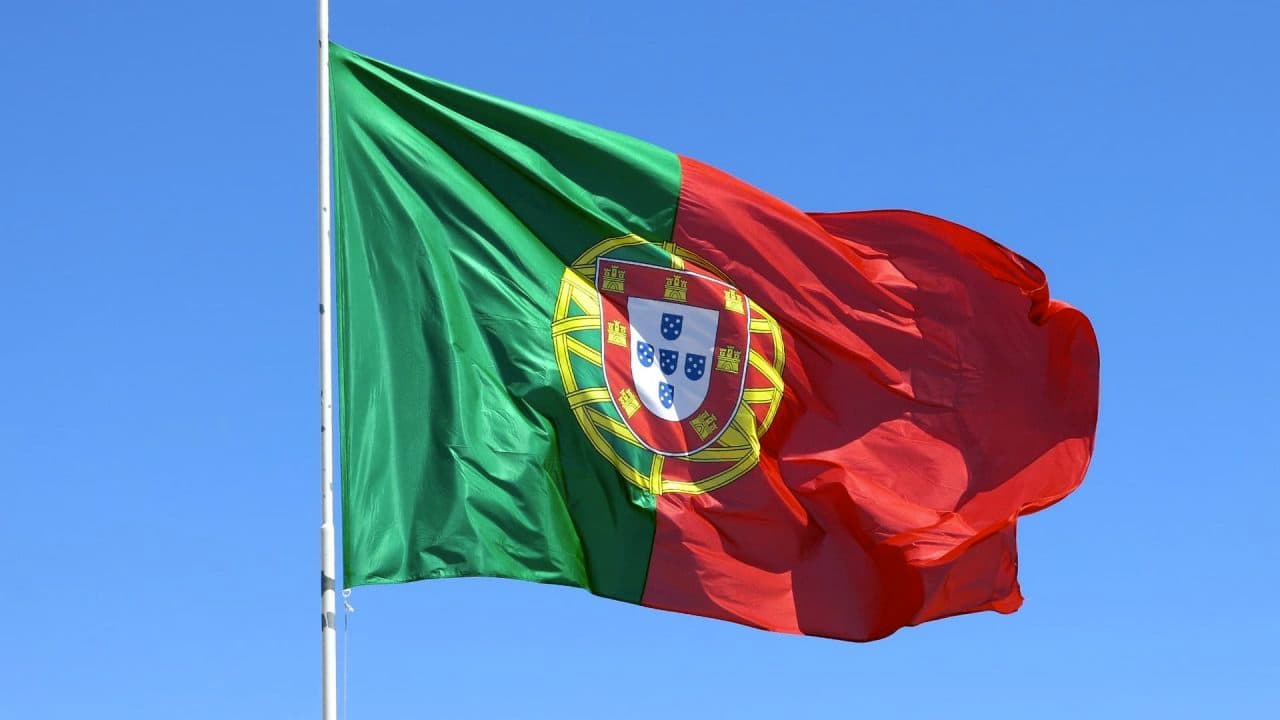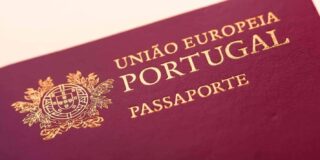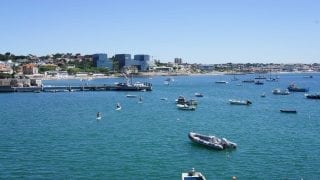Interested in Portugal Flag? Do you want to discover its colours, history and meaning? Well, you’re in the right place. We will tell you everything you need to know about the Portuguese flag. But don’t worry. We will spare you the boring details and give you the most important facts! 🙂
All About the Portugal flag
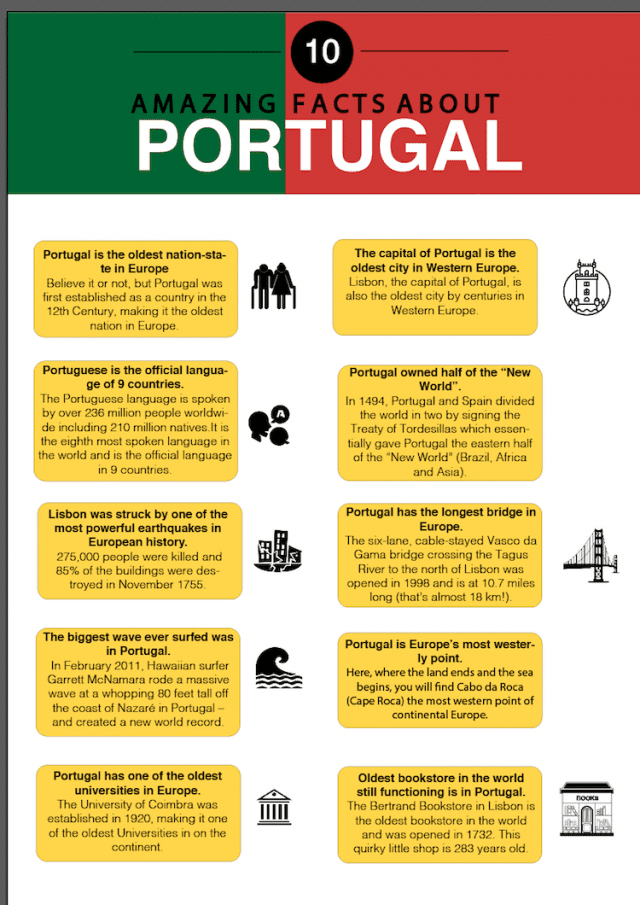
Did you know that the Portuguese flag is as rich in history as Portugal itself? The flag can be traced back through all the wars that were fought and all the travels and discoveries that were made. It can literally be traced back to the birth of Portugal itself!
What are the colours and design of the flag?
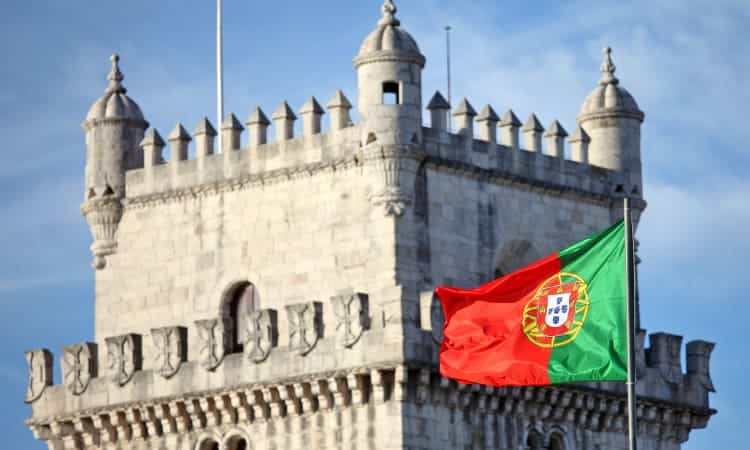
The Portuguese flag 🇵🇹 today consists of five main colours: Green, red, yellow, blue and white. Green and red being the predominant colours of the flag with green representing the hope of the nation and red representing the blood of those who died defending it.
Main elements of Portugal flag
A little off-centre to the left is the coat of arms with several elements in the middle that is predominantly yellow, white, blue and red.
Five blue shields and bezants
It includes five blue shields arranged in the shape of a Greek cross, placed on a white background. All the shields are placed in an upward position with the base (bottom part of the shield) rounded. On each one of them, there are five bezants (the little white circles) that are displayed in the form of a saltire (a diagonal cross).
Red border
Encasing the blue cross of shields is a red border that has seven castles placed on it and is also shaped like a shield. The shield is placed directly over the armillary sphere (the yellow rings in the background). All elements together are known as the nuclei of the flag and all of this is positioned directly on the margin where the green and red meets. Want to know all about Portugal? See our article on geography, economics, real estate and tourism.
Portugal flag meaning
When looking at the flag, the first thing that you notice is the green and red.
- The red representing the blood that was spilled through war;
- The green representing the hope of the Portuguese people.
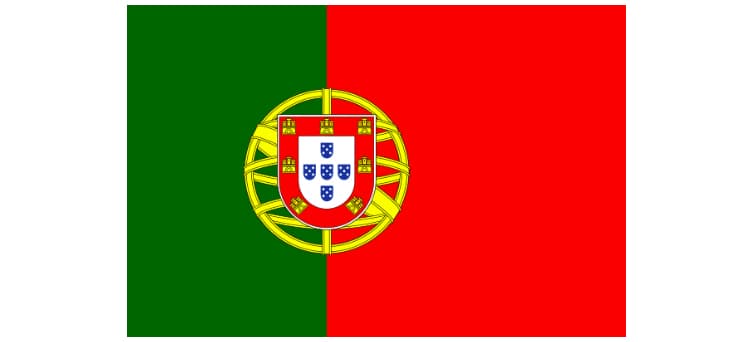
Regarding symbols and other elements of the flag, there are several interpretations of their meanings, specially of those that were added to the flag many years ago. All and all, the Portuguese flag is a beautiful representation of its rich history. And for anyone who wants to learn more about Portugal, following the flag’s evolution is the best way to do it. To help you understand further it’s meaning, we researched and found how the Portugal flag evolved since its’ very beginning. Let’s go?
How did the Portugal flag change over the years?
Before it took its current shape, the flag of Portugal went through quite some changes. The flag can be traced as far back as 1095 when Henry of Burgundy, count of Portugal from French descent and father of Afonso Henriques, used a blue cross on his shield to carry his troops into battle. In 1139, Afonso Henriques forged a battle against the Moors (Muslim forces that occupied Portugal at that point time) and won, despite being largely outnumbered. In doing so, he became the first self-proclaimed King of Portugal.

If you’re planning to visit or live in Portugal, it might be interesting to see how the Portugal Map looks like, and how it’s divided by regions.
Five blue shields
There are a lot of stories behind how the five small blue shields came about, but one popular theory is that Afonso Henriques carried the same blue cross on his shield into battle. The cross had five shield-like figures arranged on it, each consisting of eleven saltire-arranged bezants. Some people believe that this represented what used to be the heads of the metal pins that were used to fix the blue cross to the shield. Check also: 23 surprising facts about Portugal.
Changes were done to the flag after several battles
After the various conquests and battles, the majority of the blue parts of the cross were chipped off due to the swords hitting the shield, leaving exposed only the silver shield and the blue in-between the bezants, thus creating the five shields that we see today on the Portuguese flag. Another belief is that the five blue shields represent the five Moorish (Muslim) kings defeated by Afonso Henriques in the Battle of Ourique. The shields were arranged in such a way that three were pointing down and two, one on each side forming the cross, were pointing inwards.
Changes done by King Afonso III
King Afonso III added the castles and red outlining that can be seen on the flag today, in 1248. Not being the first-born son of Afonso II, Afonso III was not allowed to use the arms of his brother, Sancho II, without it being different. To mark his reign as King, he added sixteen castles and a red border to the coat of arms. It is believed that this is a representation of his ties to the Castilian House of Burgundy that has two castles displayed in their coat of arms for both his mother and his wife who were Castilian.
Changes done by King John II
In 1485, when John II took the throne, he made some changes to the Portuguese flag, which is still visible up until today. He changed the number of castles to seven (representing the seven victories of the Portuguese over their enemies and also to symbolise the Kingdom of the Algarve). The King also replaced the eleven bezants in each shield with five that represent, according to some theories, the five wounds of Jesus on the cross. And in total, the five shields plus the 25 bezants represents the 30 coins that Judas received to betray Jesus Christ. Amazing right? He also pointed all of the five shields downwards and smoothed out the edges of the shields. But one of the most important changes that he made was changing the coat of arms from its original square shape into a shield-like shape, mounted by a crown. And instead of the coat of arms occupying the entire flag, he mounted it on a white rectangular flag. We’ve also written a guide on the best cities in Portugal, check it out.
The flag remained the same for almost four centuries
From 1495 to 1815, the Portuguese flag remained more or less the same. Each reigning King changed the coat of arms slightly with his ascent to the throne, but overall it remained in the shape of a shield with a crown mounted on top.
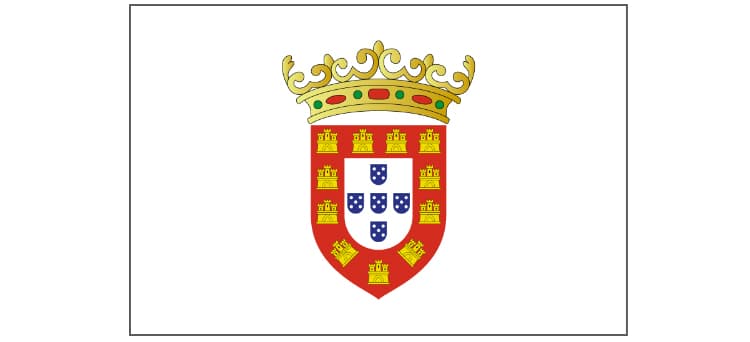
Did you know that the Portuguese coat of arms can be seen on various buildings throughout the country? Keep an eye out next time you go travelling. Find out which are the 10 best monuments to see in Lisbon by reading this article.
The surprising story behind the use of armillary sphere in the Portugal flag
The armillary sphere design that is visible today on the Portuguese flag dates back as far as 276 – 194 BC and its design was invented by a Greek mathematician called Eratosthenes. It is the yellow set of rings that is visible on the flag behind the coat of arms. An armillary sphere played an incredibly important role during the Age of Exploration when King Manuel I was at reign. It was used in the navigation of the oceans and is a very complex instrument that depicts the entire universe. Armillary spheres played such an important part in Portuguese history that it’s symbol can also be seen in the artwork on important landmarks such as the Monastery of Jerónimos (Mosteiro dos Jerónimos) and in the Tower of Belém (Torre de Belém) in Lisbon. The design appeared for the first time on a flag in between 1495 to 1521 when King Manuel I used it as his personal flag.
The appearance and disappearance of the armillary sphere from the flag
In 1807, the Portuguese royal court was forced to flee Portugal due to the invasion of Napoleon’s army. They settled in Brazil, and in 1815 they formed the United Kingdom of Portugal, Brazil, and the Algarve islands. It was not until 1816, when John the VI took the throne in Brazil, that we see the armillary sphere appearing for the first time in the Portuguese flag. In 1820, the Portuguese crown was summoned to return to Lisbon, and in 1826, when King John the VI died, the armillary sphere was removed from the flag and was not included again until 1910.
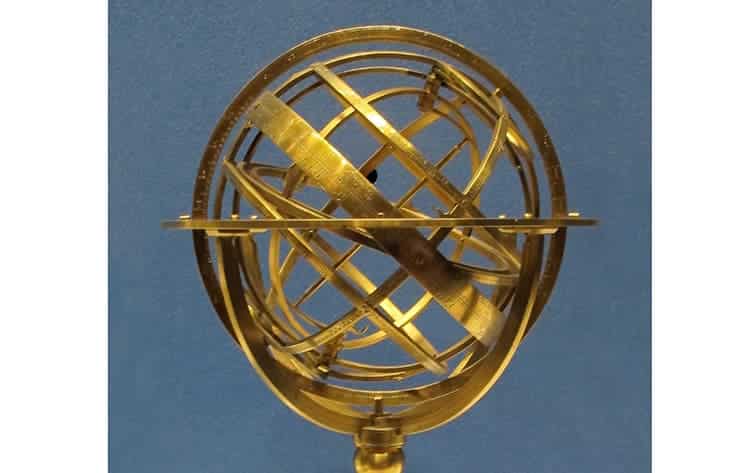
Adding blue and white to the Portugal flag
Queen Maria II was the first to introduce colour to the white background in 1830 on which the code of arms is mounted. She used blue that represented royalty, and white. Currently, this flag is used by Portuguese monarchists.
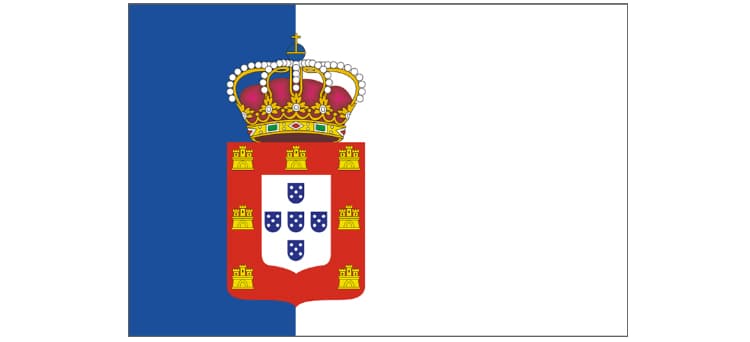
This brings us to the current Portuguese flag. In 1911, a year after the downfall of the Portuguese monarchy that reigned for more than eight centuries, the flag like we know it today, was accepted by the Republican party. Phew. That’s a lot of history right there! I bet you didn’t know that there were so many changes made to the Portugal flag, right? 🙂
Where to buy your own flag
For all you flag enthusiasts, there is a shop in the middle of Lisbon called Loja das Bandeiras (shop of flags) (website is in Portuguese) where you can buy flags that date back through the history covering all the cities and towns of Central Portugal. Cool huh? We hope you enjoyed this article about the Portugal flag and if you have any questions, feel free to ask in the comments below. Ah, and don’t forget to subscribe to our newsletter to receive exclusive content, such as e-books, testimonials and (of course) our weekly compilation of our best articles about Portugal.

